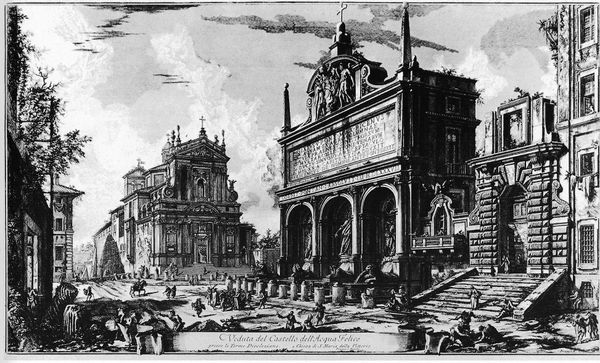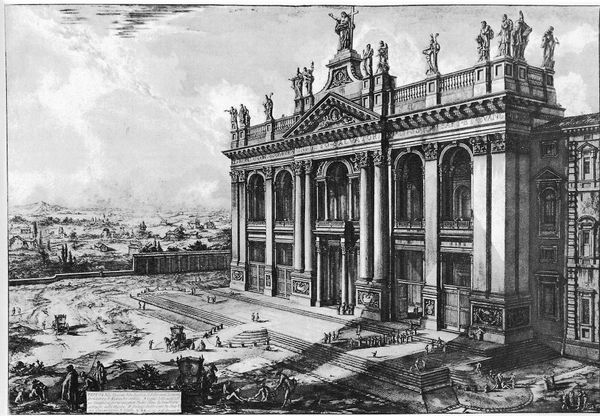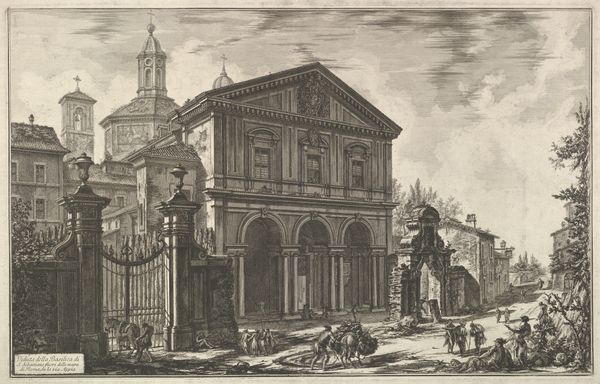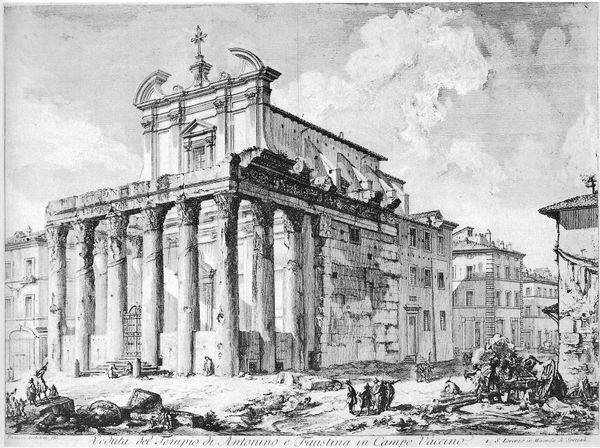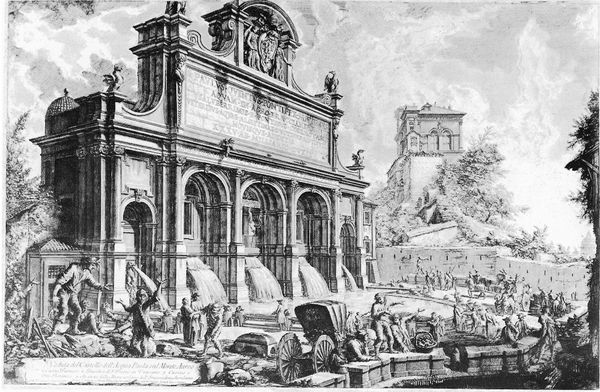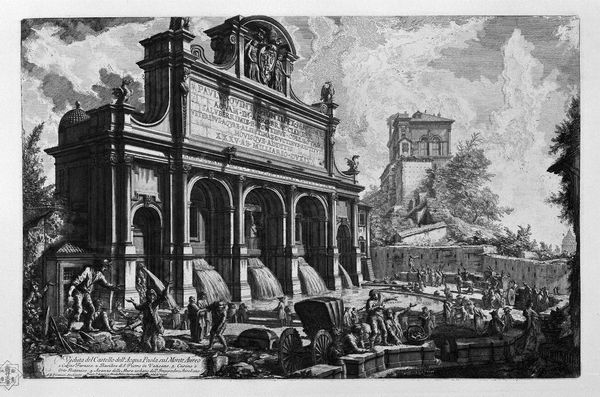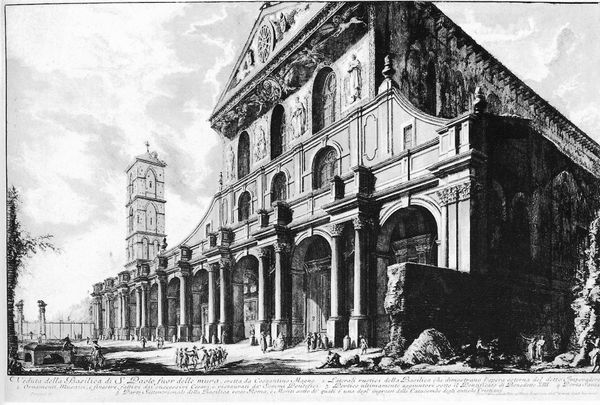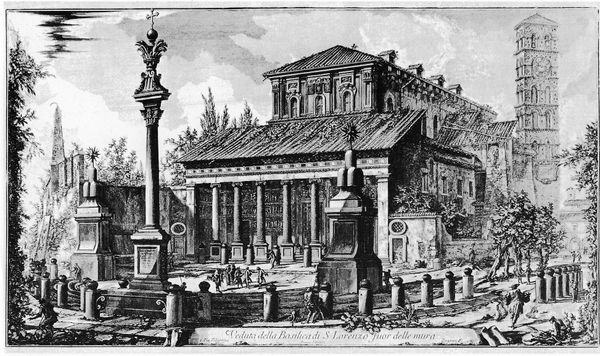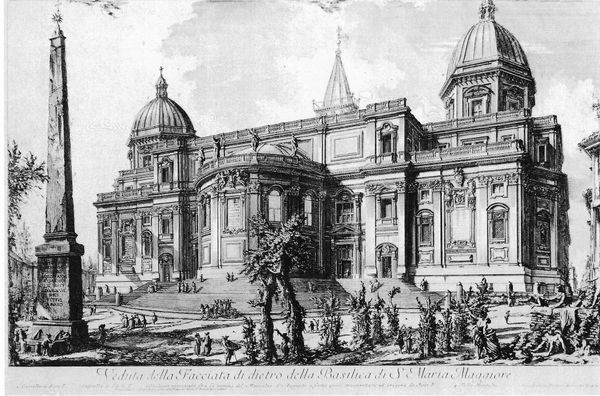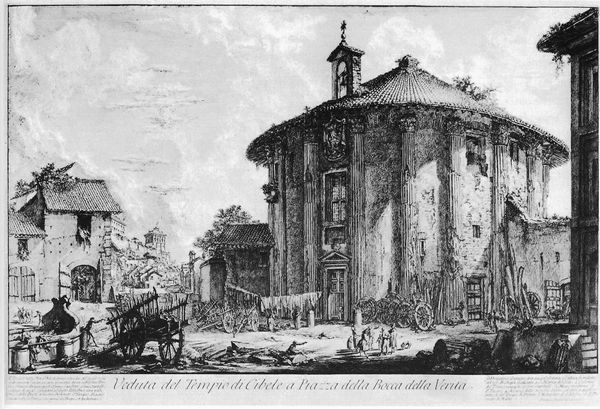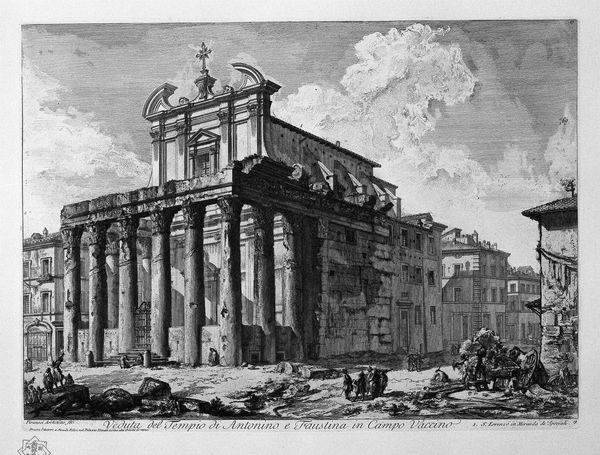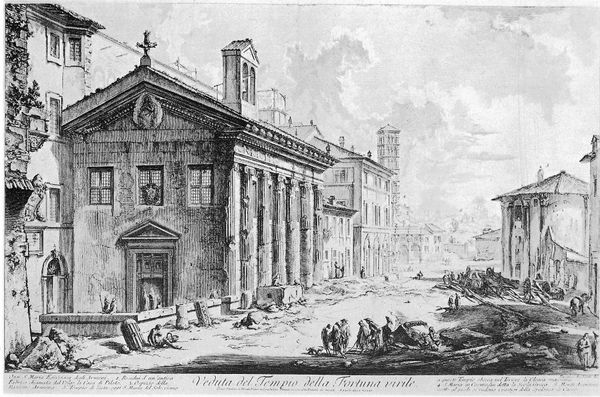
drawing, print, etching, architecture
#
drawing
# print
#
etching
#
landscape
#
italian-renaissance
#
architecture
Copyright: Public domain
Curator: This etching is from Giovanni Battista Piranesi's series, "Vedute di Roma," or "Views of Rome." It is one of his many prints depicting the city's architecture. Editor: It's breathtaking. The density of lines creates such depth, drawing the eye into this bustling, almost chaotic street scene. It feels both grand and intimate. Curator: Piranesi aimed to capture the magnificence of Rome and also, critique the papal city and state and how it chose to rebuild and/or preserve antique structures. Note how he exaggerated the scale of the buildings relative to the figures, perhaps alluding to the importance of the historical, social structures in Rome. Editor: Exactly! The scale play is brilliant, as this shift in perspective definitely draws your eye upwards towards the structures, where his sharp etched line work brings forth incredible clarity and depth. I can make out different textures, all within this monochromatic palette. Curator: Indeed. Piranesi understood the power of printmaking as a tool for disseminating political, social, and historical agendas. The print medium made it available for those who would tour Italy, serving as historical documentation and critique available to any literate tourist who wished to study it closely. Editor: And the dramatic lighting enhances the romantic feel, doesn’t it? Those dark shadows in the foreground lead the viewer to a well-lit center with architectural details rendered meticulously, as you say, highlighting both structure and the social reality contained within these majestic structures. Curator: Precisely, and his selection of viewpoints, the use of the printing press, suggests how deeply enmeshed his artistic choices were to his personal politics of making art available to the tourist economy. Editor: Considering how the structures and people have morphed, vanished or evolved to suit the times—it almost serves as a memento mori—not in a morbid sense, but highlighting the constant state of flux—what will outlast what? Curator: That's a lovely sentiment to think on. One takeaway could be understanding art not simply as a visually pleasant experience, but instead an informative narrative that shows what and how social mores influence artistic and structural production. Editor: And vice-versa. Beautiful.
Comments
No comments
Be the first to comment and join the conversation on the ultimate creative platform.

